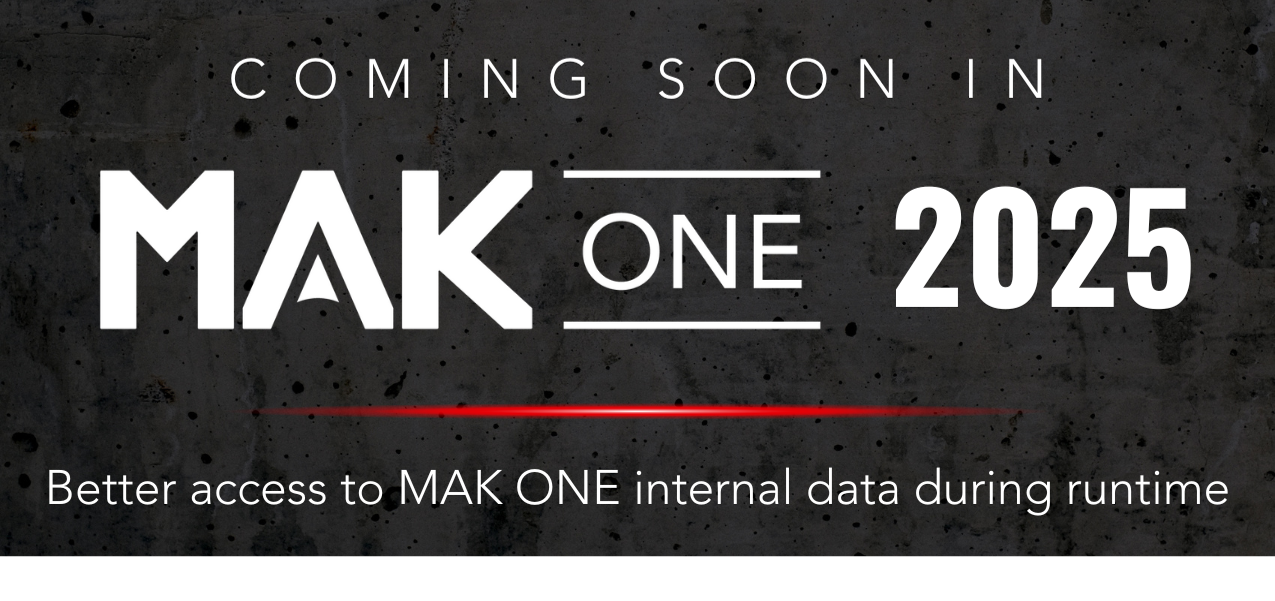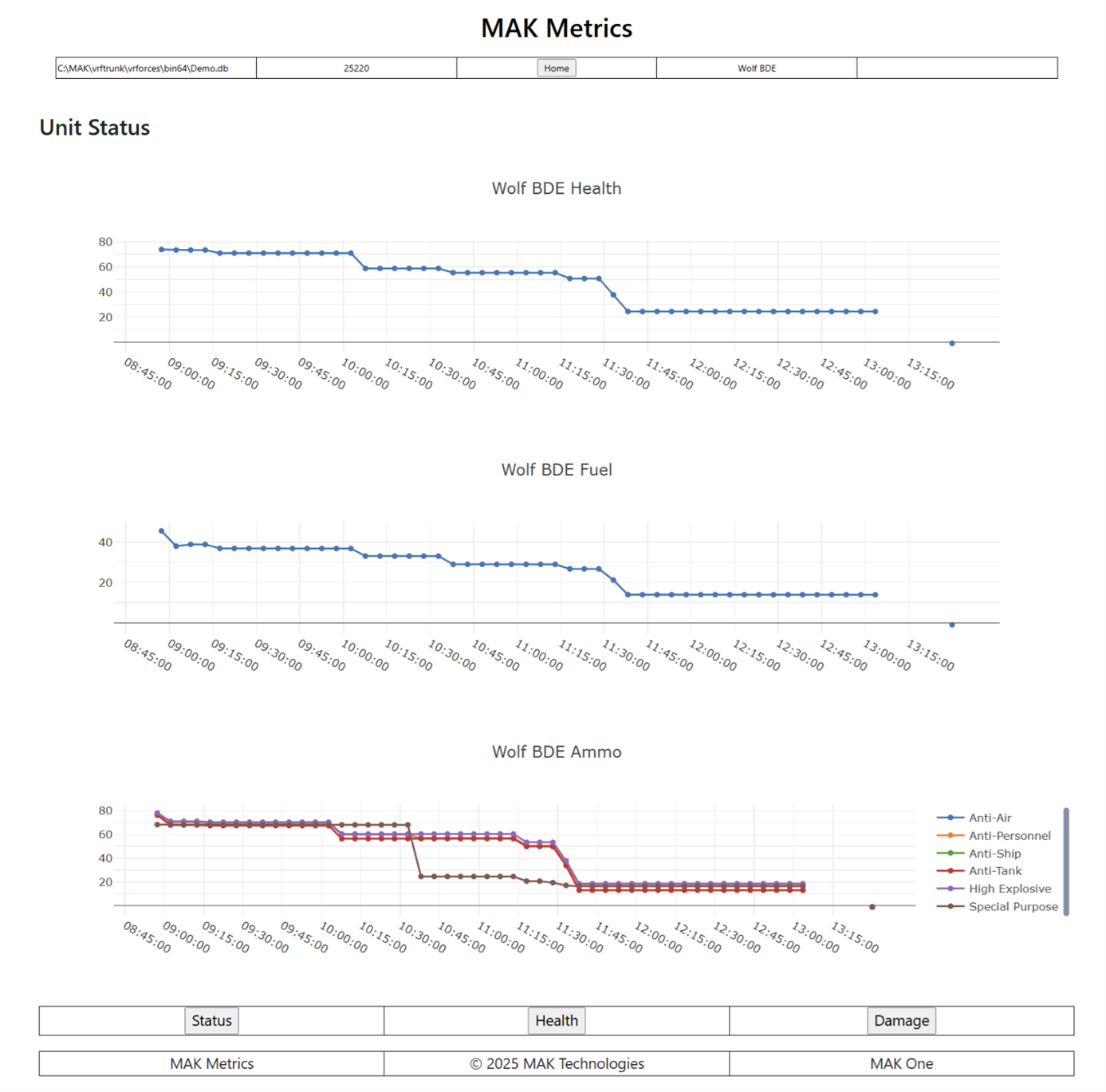
MySQL and SQLite Data Logging in VR-Forces
By Alex Broadbent
Wargaming enthusiasts and simulation pros: we’re excited to share a new VR-Forces feature coming in the MAK ONE 2025 release later this summer – MAK Metrics. We developed the ability to record aggregate-level scenario data and pipe it directly into MySQL and SQLite databases. That means you can capture key scenario details, things like fuel levels, weapon usage, damage, detonations, and unit status, and store them in a format that’s easy to search, sort, and analyze and compare different scenario runs.
Log what you want, when you want
Want to control how often data is logged? Enable the plugin and adjust the SQL tick rate to record lower or higher details of your aggregate level simulation. This flexibility lets you balance data granularity with performance, making sure that you capture the right amount of detail.
The real magic happens when you start exploring your data. You can extract exactly what you need like details about weapon resources or combat effectiveness, filtered by scenario run ID or simulation time. Want to look at fuel usage across a scenario run? Here’s an example of the kind of SQL query you might use:
SELECT markingText, t2.simTime, currentAmount, t1.scenarioRunId
FROM object t1
JOIN FuelResource t2 ON t1.objectUuid = t2.entity
WHERE t1.scenarioRunId <= 26054
ORDER BY t2.simTime;
You’ll get results by entity, sorted by time, showing how much fuel each entity has left. You can even filter based on simulation or real-world timestamps.
Performance That Keeps Up
To keep your simulations running smoothly, the plugin plays nicely with VR-Forces’ performance tweaks. Speed up or slow down your simulation by adjusting the time scale and boosting performance by increasing thread usage.
So what?
This plugin bridges the gap between VR-Forces’ simulation engine and database-driven analysis, giving you the tools to dissect your scenarios with precision. If you’re running complex scenarios and need to understand what’s working and what’s not, this gives you the tools to dig deeper without slowing things down.
And while we’ve added built-in support for MySQL and SQLite, this implementation shows how you can add support for other databases too.
The screenshot below shows an example of MAK Metrics, visualizing unit health, fuel, and ammo levels throughout a scenario. Each chart tracks data for the Wolf Brigade (BDE), giving users a clear time-based view of operational performance.



